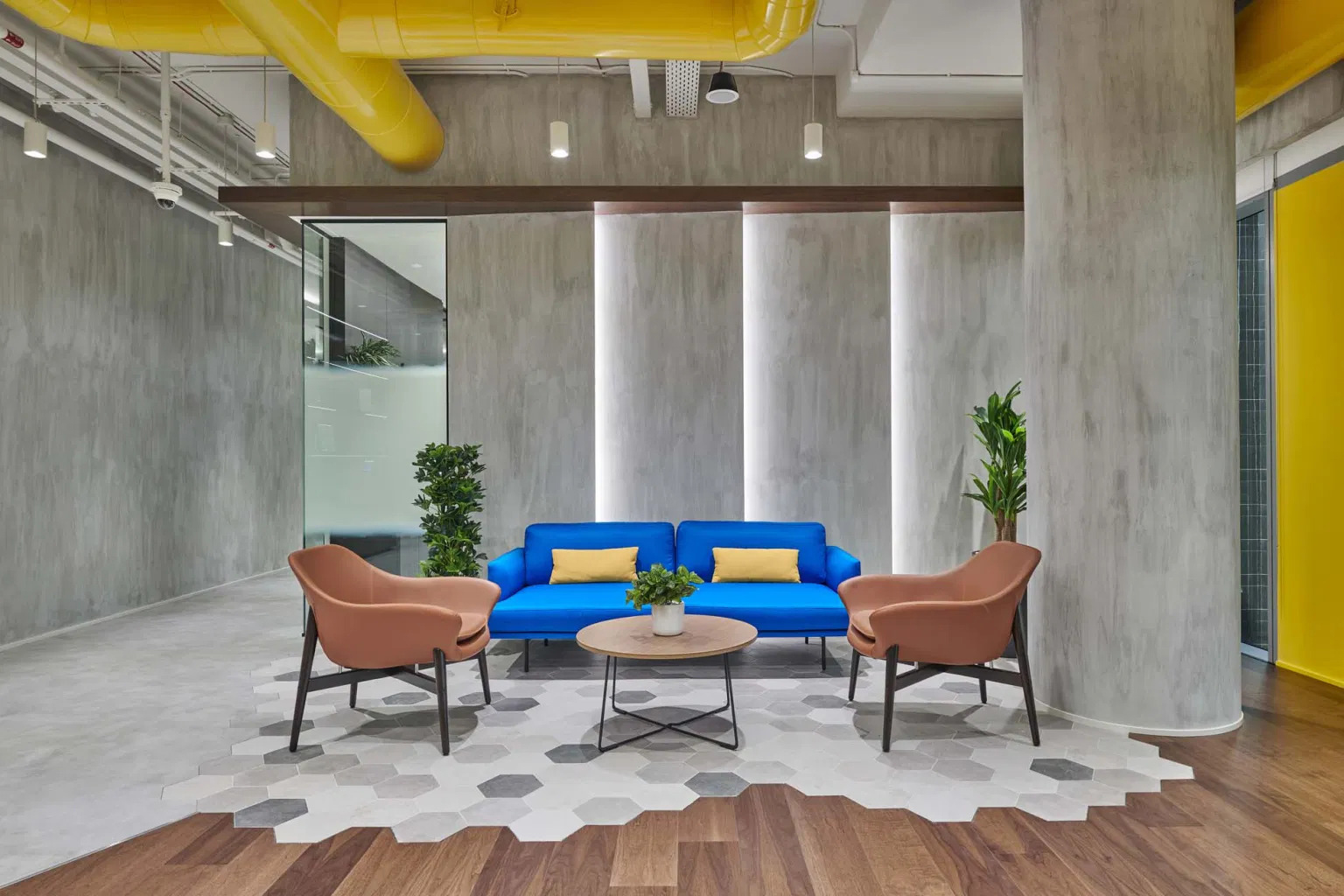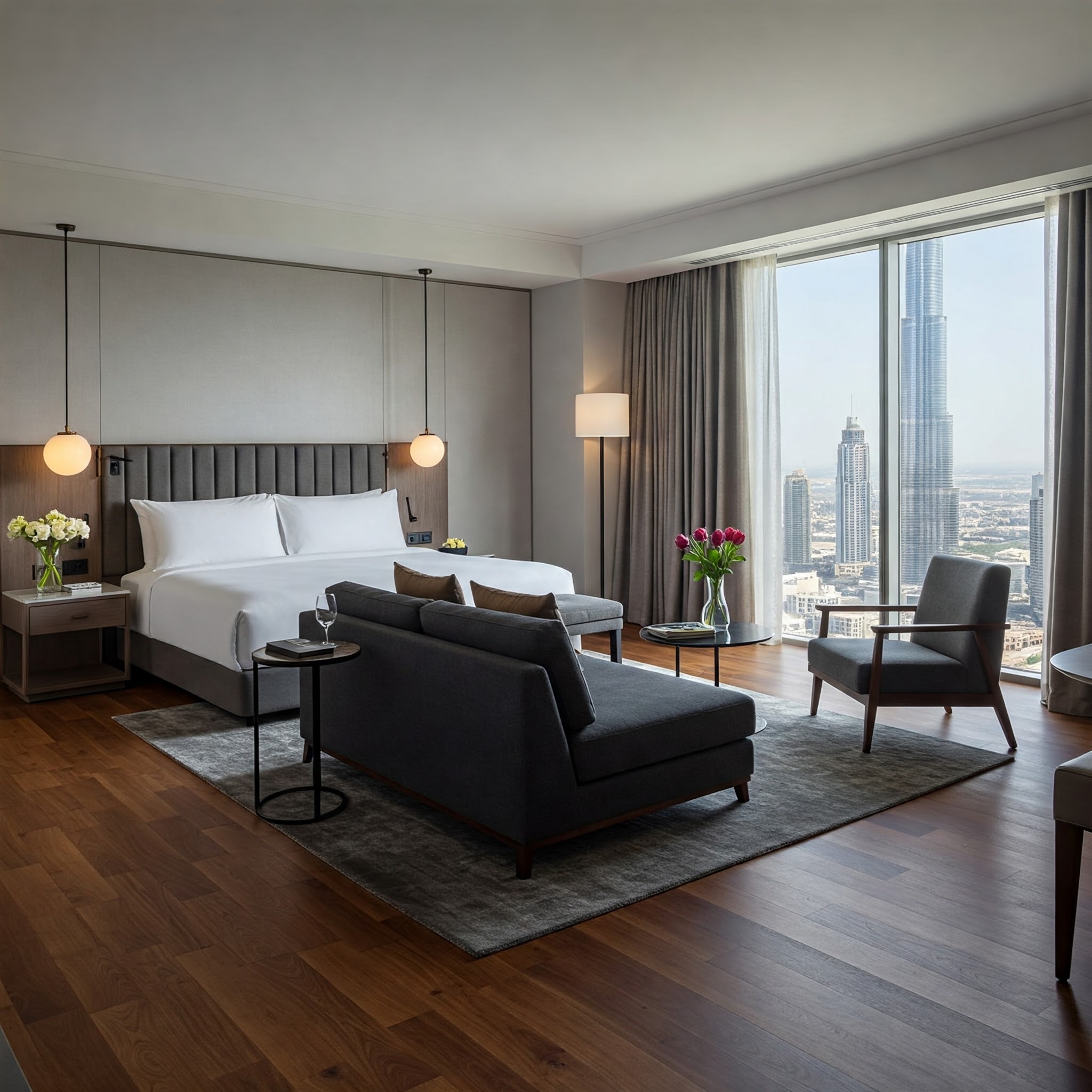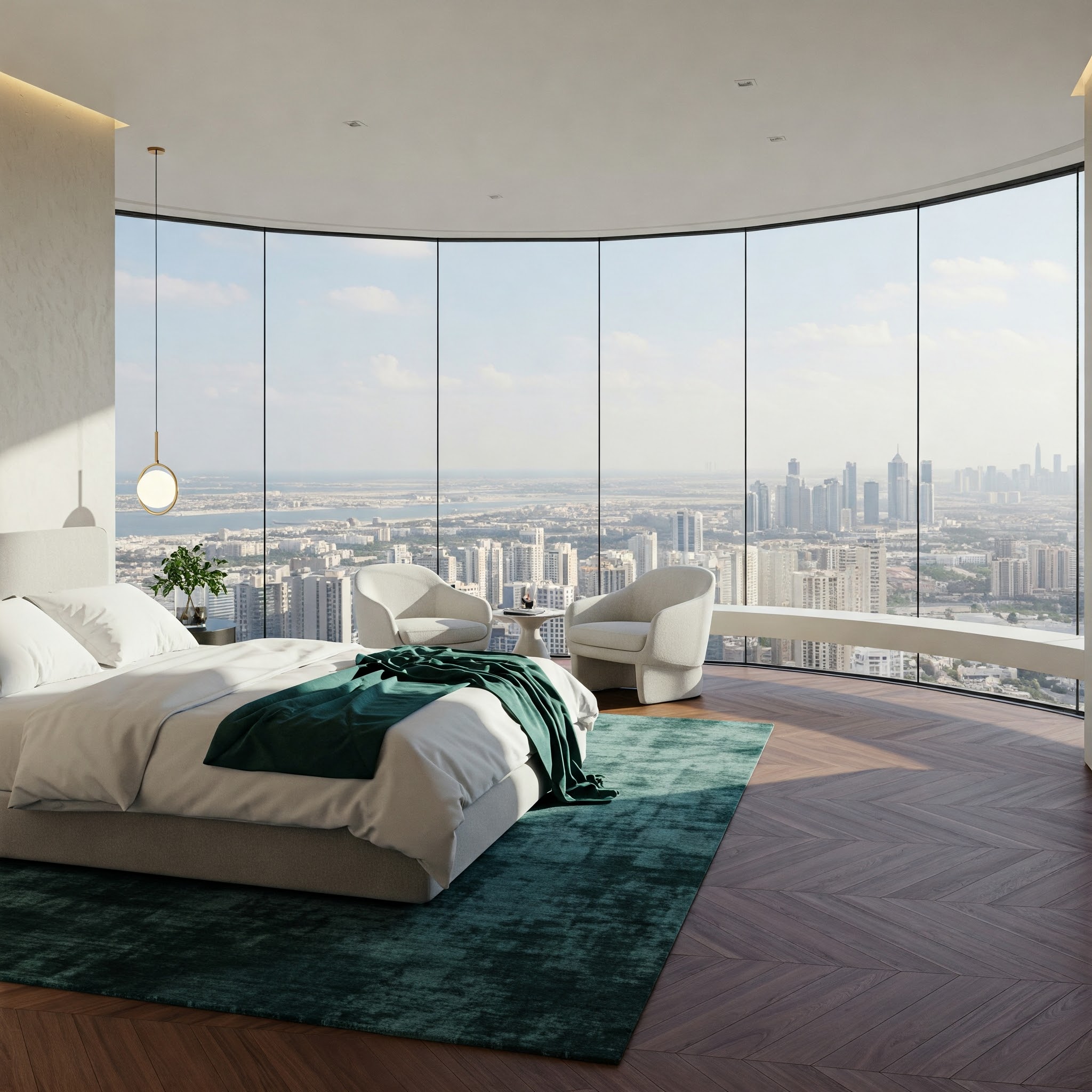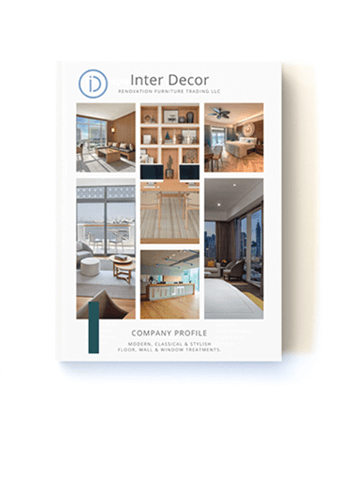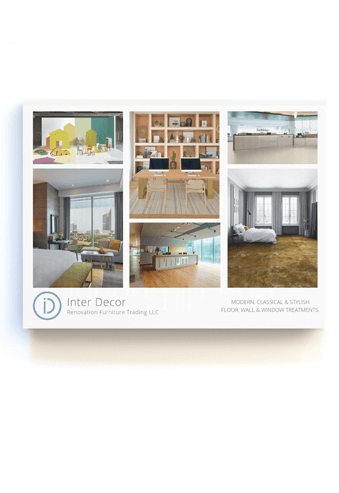Durability Meets Design: Exploring Top-Tier Commercial Flooring Materials in the UAE
Introduction
In the bustling commercial landscape of the United Arab Emirates, where architectural marvels and cutting-edge design are paramount, the importance of selecting the right flooring materials cannot be overstated. As businesses strive to create lasting impressions and maintain functional spaces, the quest for flooring solutions that seamlessly blend durability with aesthetic appeal has become increasingly significant. This article delves into the realm of top-tier commercial flooring materials available in the UAE, exploring options that not only withstand the test of time but also elevate the visual appeal of commercial spaces.
Durability Meets Design: Exploring Top-Tier Commercial Flooring Materials in the UAE
The UAE's commercial sector, characterized by its rapid growth and innovative spirit, demands flooring solutions that can withstand high foot traffic, resist wear and tear, and maintain their appearance over extended periods. Simultaneously, there is a growing emphasis on creating visually stunning environments that reflect brand identities and enhance user experiences. This intersection of practical durability and aesthetic excellence has led to the emergence of a diverse range of high-quality flooring materials tailored to meet the unique needs of UAE's commercial spaces.
From resilient luxury vinyl tiles that mimic natural materials to sophisticated epoxy coatings that offer both strength and style, the market presents a plethora of options. Each material boasts its own set of advantages, catering to different industry requirements, budget considerations, and design preferences. As we explore these top-tier flooring solutions, we will uncover how they address the specific challenges posed by the UAE's climate, maintenance needs, and evolving design trends.
The Intersection of Durability and Aesthetics in Commercial Flooring
The convergence of durability and aesthetics in commercial flooring represents a paradigm shift in the approach to interior design and facility management. No longer are businesses compelled to choose between longevity and visual appeal; modern flooring materials offer a harmonious blend of both. This synergy is particularly crucial in the UAE, where the commercial landscape is marked by a desire for opulence and sophistication, coupled with the practical need for resilience against harsh environmental factors.
Durability in commercial flooring extends beyond mere resistance to physical wear. It encompasses factors such as chemical resistance, ease of maintenance, and the ability to retain color and texture over time. On the other hand, aesthetics in this context is not limited to surface-level beauty. It involves the capacity of flooring to contribute to the overall ambiance of a space, complement architectural elements, and even influence the perception of a brand or business.
As we delve deeper into the world of commercial flooring materials, we will examine how leading manufacturers and innovative technologies have risen to meet this dual challenge. From advanced polymer composites to engineered stone products, the range of available options demonstrates the industry's commitment to providing solutions that are as visually striking as they are enduring. This exploration will equip decision-makers with the knowledge to make informed choices that align with both their practical requirements and design aspirations, ensuring that their commercial spaces in the UAE stand the test of time while making a lasting impression.
High-Performance Luxury Vinyl Tiles (LVT)
High-Performance Luxury Vinyl Tiles (LVT) represent a significant advancement in flooring technology, offering a sophisticated blend of aesthetics and functionality. These innovative flooring solutions have garnered considerable attention in both residential and commercial sectors due to their exceptional durability, versatility, and cost-effectiveness. LVT products are engineered to emulate the appearance of natural materials, such as hardwood or stone, while providing superior performance characteristics that surpass their traditional counterparts.
Innovative Water-Resistant Designs and Patterns
The realm of High-Performance Luxury Vinyl Tiles has witnessed a remarkable evolution in terms of design and water-resistance capabilities. Manufacturers have invested substantial resources in developing cutting-edge technologies that render LVT products impervious to moisture infiltration. This breakthrough has expanded the application of LVT to areas previously considered unsuitable for vinyl flooring, such as bathrooms, kitchens, and basements.
Contemporary LVT offerings feature:
- Advanced Core Compositions: Utilising proprietary polymer blends that repel water and prevent warping or swelling upon exposure to moisture.
- Precision-Engineered Locking Systems: Interlocking mechanisms that create a watertight seal between individual tiles, effectively preventing water from seeping into the subfloor.
- Hydrophobic Surface Treatments: Specially formulated coatings that enhance water repellency and facilitate effortless cleaning.
The aesthetic aspect of LVT has not been overlooked in the pursuit of functionality. Manufacturers employ state-of-the-art printing technologies to recreate intricate patterns and textures with unprecedented realism. From faithful reproductions of exotic wood grains to accurately rendered stone textures, the design possibilities are virtually limitless. This versatility allows designers and homeowners to achieve their desired aesthetic without compromising on performance or durability.
Durability and Ease of Maintenance
High-Performance Luxury Vinyl Tiles are engineered to withstand the rigours of daily use in both residential and commercial environments. The exceptional durability of LVT products can be attributed to several key factors:
1. Wear Layer Technology: LVT incorporates a robust wear layer, typically composed of aluminium oxide or urethane, which provides superior resistance to scratches, scuffs, and stains.
2. Dimensional Stability: Advanced manufacturing processes ensure that LVT maintains its shape and size, even under varying temperature and humidity conditions.
3. Impact Resistance: The inherent flexibility of vinyl, combined with strategic layering, renders LVT highly resistant to cracks and chips from impact.
The maintenance requirements for High-Performance Luxury Vinyl Tiles are notably minimal, contributing to their appeal in high-traffic areas and busy households. The following characteristics underscore the ease of maintenance associated with LVT:
- Stain Resistance: The non-porous nature of LVT prevents the absorption of spills, facilitating prompt and effective clean-up.
- Chemical Resistance: LVT demonstrates remarkable resilience against common household light chemicals and cleaning agents, maintaining its appearance over time.
- Simple Cleaning Regimen: Regular sweeping or vacuuming, coupled with occasional damp mopping, suffices to preserve the lustrous appearance of LVT flooring.
In conclusion, High-Performance Luxury Vinyl Tiles represent a paradigm shift in flooring solutions, offering an unparalleled combination of aesthetic versatility, water resistance, durability, and ease of maintenance. As technology continues to advance, LVT products are poised to further solidify their position as a preferred flooring option across diverse applications.
Innovative Stone Plastic Composite (SPC)
Stone Plastic Composite (SPC) flooring represents a significant advancement in the realm of resilient flooring materials. This innovative product combines the durability of stone with the versatility of plastic, resulting in a robust and aesthetically pleasing flooring solution. SPC flooring is engineered to withstand the rigors of high-traffic areas while offering a wide array of design possibilities, making it an increasingly popular choice for both residential and commercial applications.
Innovative Designs and Patterns for Both Floors and Walls
The versatility of Stone Plastic Composite extends beyond its structural integrity, as it offers a plethora of design options for both floors and walls. Manufacturers have harnessed advanced printing technologies to create SPC products that convincingly mimic the appearance of natural materials such as wood, stone, and ceramic. These realistic reproductions allow designers and homeowners to achieve the desired aesthetic without the associated maintenance challenges of natural materials.
SPC flooring is available in an extensive range of colors, patterns, and textures, enabling the creation of visually striking and unique interiors. From classic wood grain patterns to contemporary geometric designs, the possibilities are virtually limitless. Moreover, the adaptability of SPC allows for seamless transitions between different design elements, facilitating the creation of cohesive and harmonious spaces.
In addition to flooring applications, SPC has found its way onto walls, offering an innovative alternative to traditional wall coverings. This application provides not only visual appeal but also enhanced durability and moisture resistance compared to conventional options. The ability to use SPC on both floors and walls opens up new avenues for design continuity and creative expression in interior spaces.
Long-lasting Finish and Low Maintenance Requirements
One of the most compelling attributes of Stone Plastic Composite flooring is its exceptional durability and minimal maintenance requirements. The innovative composition of SPC, which typically includes limestone powder, polyvinyl chloride, and stabilizers, results in a product that is highly resistant to wear, scratches, and impacts. This resilience makes SPC flooring particularly suitable for high-traffic areas in both residential and commercial settings.
The surface of SPC flooring is engineered to maintain its appearance over extended periods, even under challenging conditions. Many SPC products feature a wear layer that provides additional protection against scratches, stains, and fading. This layer often incorporates UV-resistant properties, ensuring that the flooring retains its color and pattern integrity even when exposed to direct sunlight.
Maintenance of SPC flooring is remarkably straightforward, contributing to its appeal among property owners and facility managers. Regular sweeping or vacuuming, coupled with occasional damp mopping, is typically sufficient to keep the flooring in optimal condition. Unlike natural wood or stone, SPC does not require periodic sealing, waxing, or polishing to maintain its appearance or protective qualities.
Furthermore, the water-resistant nature of SPC makes it an ideal choice for areas prone to moisture, such as kitchens, bathrooms, and basements. This characteristic not only enhances the longevity of the flooring but also simplifies cleaning and maintenance routines. The imperviousness to water also contributes to the prevention of mold and mildew growth, promoting a healthier indoor environment.
In conclusion, the innovative nature of Stone Plastic Composite flooring, combined with its aesthetic versatility and low maintenance requirements, positions it as a superior flooring solution for a wide range of applications. As technology continues to advance, it is likely that SPC will evolve further, offering even more benefits to consumers and designers alike.
High-Quality Carpet Tiles
High-quality carpet tiles have revolutionized the flooring industry, offering a versatile and durable solution for both residential and commercial spaces. These modular flooring options combine the luxurious feel of traditional carpeting with the practicality and ease of installation associated with tiles. As the demand for sustainable and aesthetically pleasing flooring solutions continues to grow, manufacturers have responded by developing innovative carpet tile designs that cater to diverse tastes and environmental concerns.
Trendy Organic and Textural Look Carpet Tiles
The latest trends in high-quality carpet tiles emphasize organic textures and visual appeal, creating a harmonious blend between nature-inspired aesthetics and modern design sensibilities. These innovative products offer a multitude of benefits:
1. Visual Depth: Contemporary carpet tiles feature intricate patterns and textures that mimic natural elements, such as stone, wood grain, or grass. This organic appearance adds visual depth to any space, creating a more dynamic and inviting atmosphere.
2. Tactile Experience: The textural aspect of these carpet tiles extends beyond mere visual appeal. Manufacturers employ advanced tufting techniques to produce tiles with varying pile heights and densities, resulting in a tactile experience that enhances the overall comfort of the space.
3. Customization Options: The modular nature of carpet tiles allows for unprecedented customization. Designers can mix and match different textures and patterns to create unique flooring layouts that reflect the specific character of a space.
4. Acoustic Properties: The textural variations in these carpet tiles contribute to improved acoustic performance. The uneven surfaces help to absorb sound waves, reducing echo and creating a more pleasant auditory environment.
5. Durability: Despite their luxurious appearance, these trendy organic-look carpet tiles are engineered for durability. Advanced fiber technologies ensure resistance to wear, staining, and fading, making them suitable for high-traffic areas.
Cradle-to-Cradle Certified Products
In response to growing environmental concerns, leading carpet tile manufacturers have embraced the Cradle-to-Cradle (C2C) certification, a comprehensive approach to sustainable product design and manufacturing. This certification ensures that carpet tiles meet rigorous standards across five critical categories:
1. Material Health: C2C certified carpet tiles are produced using materials that have been thoroughly assessed for their impact on human and environmental health. This ensures that the products are free from harmful chemicals and contribute to a healthier indoor environment.
2. Material Reutilization: The certification promotes a circular economy model, where carpet tiles are designed for easy disassembly and recycling at the end of their lifecycle. This approach significantly reduces waste and conserves valuable resources.
3. Renewable Energy and Carbon Management: Manufacturers of C2C certified carpet tiles commit to using renewable energy sources and implementing strategies to reduce their carbon footprint throughout the production process.
4. Water Stewardship: The certification requires responsible water usage practices, including water conservation measures and the implementation of systems to prevent water pollution during manufacturing.
5. Social Fairness: C2C certification also considers the social impact of production, ensuring fair labor practices and positive community engagement throughout the supply chain.
By choosing Cradle-to-Cradle certified carpet tiles, consumers and businesses can contribute to a more sustainable future while enjoying high-quality flooring solutions. These products represent a significant advancement in the flooring industry, offering a perfect balance between aesthetic appeal, functionality, and environmental responsibility.
Timeless Wooden Parquet Flooring
Wooden parquet flooring has long been synonymous with elegance and sophistication in interior design. This timeless flooring option continues to captivate homeowners and designers alike with its intricate patterns and warm, natural aesthetics. Parquet flooring, characterized by its geometric arrangements of wood pieces, offers a perfect blend of traditional craftsmanship and contemporary appeal. Its versatility allows it to complement a wide range of architectural styles, from classic to modern, making it a perennial favorite in both residential and commercial spaces.
Elegant and Timeless Oak and Walnut Finishes
The enduring appeal of wooden parquet flooring is largely attributed to the exquisite finishes available, particularly in oak and walnut. These premium hardwoods offer distinct advantages:
Oak Parquet:
- Renowned for its durability and strength
- Features a prominent grain pattern that adds visual interest
- Available in a range of light to medium tones, enhancing room brightness
- Excellent resistance to wear and tear, ideal for high-traffic areas
Walnut Parquet:
- Prized for its rich, dark coloration
- Exhibits a smooth, fine grain texture
- Imparts a sense of luxury and sophistication to any space
- Naturally resistant to decay and insect infestation
Both oak and walnut parquet flooring can be finished in various ways to achieve desired aesthetics:
1. Natural Oil Finish: Enhances the wood's natural beauty and allows for easy maintenance
2. Matte Lacquer: Provides a subtle sheen while offering robust protection
3. High-Gloss Polish: Creates a mirror-like surface for a more formal ambiance
Trendy Herringbone and Chevron Patterns
While parquet flooring encompasses numerous design possibilities, two patterns have emerged as particularly fashionable in contemporary interiors:
1. Herringbone Pattern:
- Characterized by rectangular wood pieces arranged in a zigzag formation
- Creates a sense of movement and adds visual depth to a room
- Suitable for both large and small spaces, as it can make areas appear more expansive
- Often used in entryways, living rooms, and dining areas to create a striking first impression
2. Chevron Pattern:
- Similar to herringbone, but with wood pieces cut at a 45-degree angle to form a perfect point
- Produces a more pronounced V-shaped design
- Ideal for creating a sense of direction or leading the eye towards a focal point in a room
- Popular in long corridors, galley kitchens, and open-plan living spaces
Both patterns offer versatility in installation, allowing for customization through:
- Variation in plank sizes
- Incorporating contrasting wood species or colors
- Altering the angle of installation for unique visual effects
FSC Certified Wood Products
In response to growing environmental concerns, many manufacturers now offer Forest Stewardship Council (FSC) certified parquet flooring products. This certification ensures that the wood used in flooring production is sourced from responsibly managed forests. Key aspects of FSC certification include:
- Sustainable Harvesting: Ensures forests are managed to meet the social, economic, and ecological needs of present and future generations
- Biodiversity Protection: Safeguards endangered species and their habitats
- Workers' Rights: Upholds fair labor practices and safe working conditions
- Indigenous Peoples' Rights: Respects the land rights and traditions of indigenous communities
Choosing FSC certified parquet flooring offers several benefits:
1. Environmental Responsibility: Contributes to forest conservation and biodiversity protection
2. Quality Assurance: FSC certification often correlates with higher quality products
3. Marketability: Enhances property value by appealing to environmentally conscious buyers
4. Regulatory Compliance: Meets or exceeds many green building standards and regulations
By selecting FSC certified parquet flooring, consumers can enjoy the timeless beauty of wooden floors while supporting sustainable forestry practices and global conservation efforts.
Health-Conscious Flooring Choices
In the realm of modern interior design, the concept of health-conscious flooring has gained significant traction. As individuals become increasingly aware of the impact their living environments have on their well-being, the demand for flooring options that prioritize health and safety has surged. This section delves into various aspects of health-conscious flooring choices, exploring innovative solutions that not only enhance the aesthetic appeal of spaces but also contribute to a healthier living environment.
Acoustic Underlays: Sonixx by Interfloor
Acoustic underlays have emerged as a crucial component in health-conscious flooring solutions, with the Sonixx brand by Interfloor leading the charge in this domain. These innovative underlays serve a dual purpose: enhancing sound insulation and providing a comfortable underfoot experience.
The Sonixx range by Interfloor utilizes advanced technology to significantly reduce impact sound transmission between floors. This is particularly beneficial in multi-story buildings, where noise pollution can be a significant concern. By effectively dampening sound, these underlays contribute to a more peaceful and stress-free living environment, which is essential for mental well-being.
Moreover, the enhanced cushioning provided by Sonixx underlays offers ergonomic benefits. The added layer of comfort can reduce fatigue and joint stress, especially in areas where prolonged standing is common, such as kitchens or home offices.
Phthalate-Free Flooring
The shift towards phthalate-free flooring represents a significant advancement in health-conscious interior design. Phthalates, traditionally used as plasticizers in vinyl flooring, have been associated with various health concerns, including respiratory issues and endocrine disruption.
Phthalate-free flooring alternatives utilize safer plasticizers or entirely different materials to achieve the desired flexibility and durability. These options often include:
1. Bio-based plasticizers: Derived from renewable resources, these offer a more sustainable and health-friendly alternative.
2. Linoleum: A natural flooring option made from linseed oil, cork dust, and other organic materials.
3. Polyurethane-based flooring: Providing similar performance to vinyl without the use of phthalates.
By opting for phthalate-free flooring, homeowners and designers can create spaces that are not only aesthetically pleasing but also contribute to better indoor air quality and overall health.
A+ Emission Ratings
The concept of A+ emission ratings has become a hallmark of health-conscious flooring choices. This rating system, originating in France but now widely recognized internationally, evaluates the level of volatile organic compounds (VOCs) emitted by building materials, including flooring.
Flooring products with an A+ rating emit the lowest levels of VOCs, significantly contributing to improved indoor air quality. The benefits of low-emission flooring include:
- Reduced risk of respiratory irritation: Particularly beneficial for individuals with asthma or allergies.
- Minimized chemical exposure: Lowering the potential for long-term health effects associated with VOC exposure.
- Enhanced overall air quality: Creating a fresher, cleaner-smelling indoor environment.
When selecting flooring, prioritizing options with A+ emission ratings demonstrates a commitment to creating healthier living spaces and mitigating the potential long-term health impacts of indoor air pollution.
Slip-Resistant and Acoustically Enhanced Options
The integration of slip-resistant and acoustically enhanced features in flooring represents a holistic approach to health-conscious design. These attributes address both immediate safety concerns and long-term comfort considerations.
Slip-resistant flooring is crucial in preventing accidents, particularly in areas prone to moisture or high foot traffic. Advanced technologies in this field include:
- Textured surfaces: Providing grip without compromising on aesthetics.
- Anti-slip coatings: Invisible layers that enhance traction.
- Engineered patterns: Designs that inherently increase friction.
Simultaneously, acoustically enhanced flooring options contribute to noise reduction, creating a more serene living environment. This is achieved through:
- Sound-absorbing materials: Incorporated into the flooring structure.
- Resilient layers: Designed to dampen impact noise.
- Floating floor systems: Minimizing sound transmission to lower levels.
By combining these features, health-conscious flooring choices not only promote physical safety but also contribute to mental well-being by reducing noise-related stress and improving overall acoustic comfort in living spaces.
Conclusion
In the realm of commercial interior design, the delicate balance between functionality and style emerges as a crucial factor in creating successful spaces. Throughout this exploration, we have delved into the intricacies of designing commercial interiors that not only meet practical needs but also captivate and inspire. The art of balancing functionality and style in commercial spaces is a nuanced process that requires careful consideration of various elements, from ergonomic layouts to aesthetic appeal. By prioritizing both form and function, designers can craft environments that enhance productivity, foster creativity, and leave a lasting impression on clients and employees alike. As we have seen, the harmonious integration of practical solutions with visually appealing design elements is key to achieving this balance. Ultimately, the most successful commercial interiors are those that seamlessly blend functionality and style, creating spaces that are not only efficient and practical but also inviting, inspiring, and reflective of a brand's identity. As the commercial design landscape continues to evolve, the ability to strike this balance will remain a hallmark of exceptional interior design, ensuring that commercial spaces not only meet the needs of their occupants but also elevate the overall experience of those who interact with them.
FAQs
Frequently Asked Questions (FAQs) are an essential resource for those considering commercial flooring options. These questions address common concerns and provide valuable insights into various flooring materials, their benefits, and comparisons. By exploring these FAQs, business owners and facility managers can make more informed decisions about their flooring choices, ensuring they select the best option for their specific needs and environment.
What are the benefits of luxury vinyl tiles in commercial settings?
Luxury vinyl tiles offer durability, water resistance, easy maintenance, cost-effectiveness, and a wide range of design options. They're ideal for high-traffic areas and provide excellent sound absorption.
How does SPC flooring compare with traditional materials?
SPC (Stone Plastic Composite) flooring is more durable, water-resistant, and dimensionally stable than traditional materials. It offers better scratch and dent resistance, making it ideal for commercial spaces with heavy foot traffic.
Are carpet tiles a sustainable choice for commercial use?
Yes, carpet tiles can be a sustainable choice. Many manufacturers use recycled materials and offer recyclable products. They also allow for easy replacement of damaged areas without replacing the entire floor, reducing waste.

